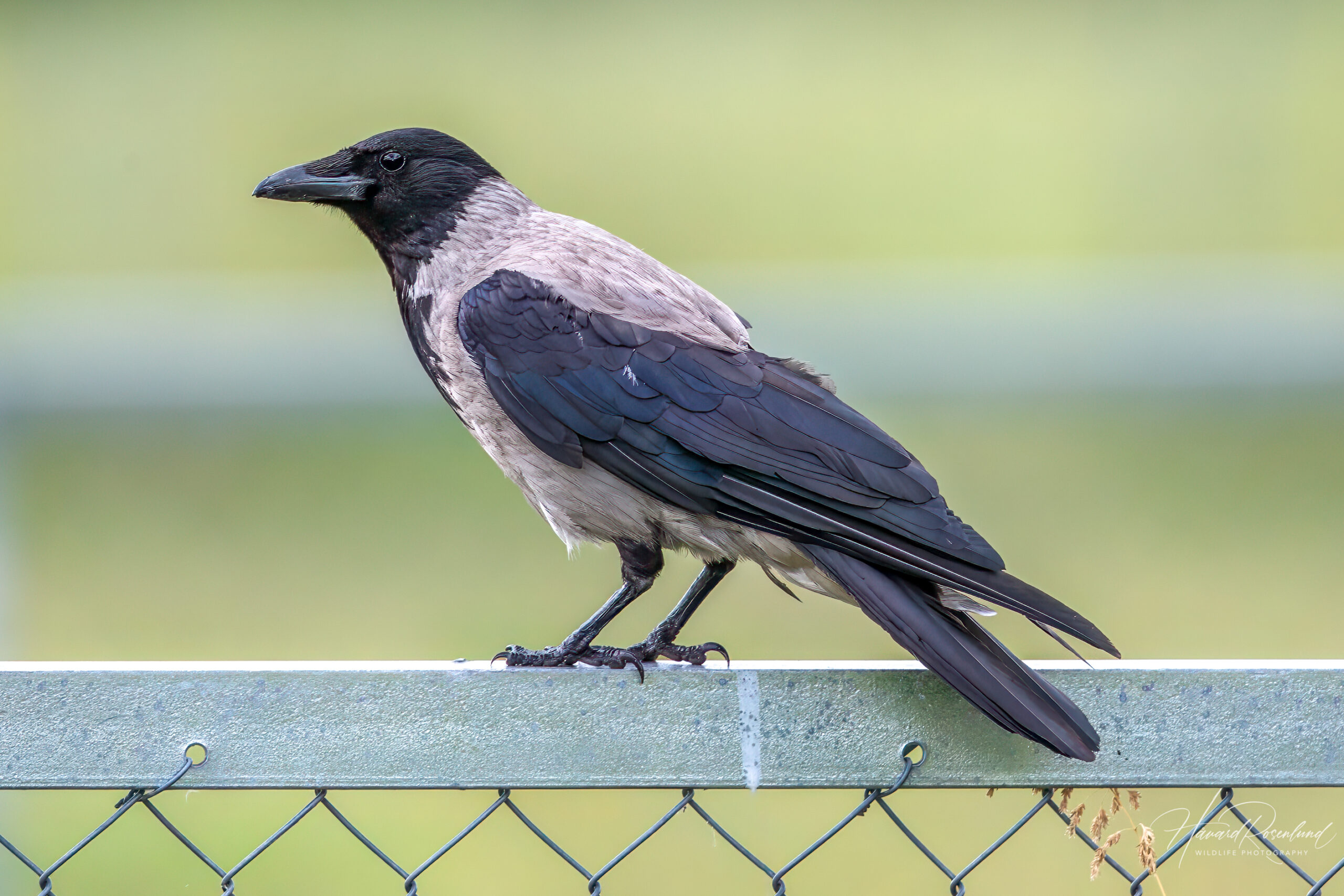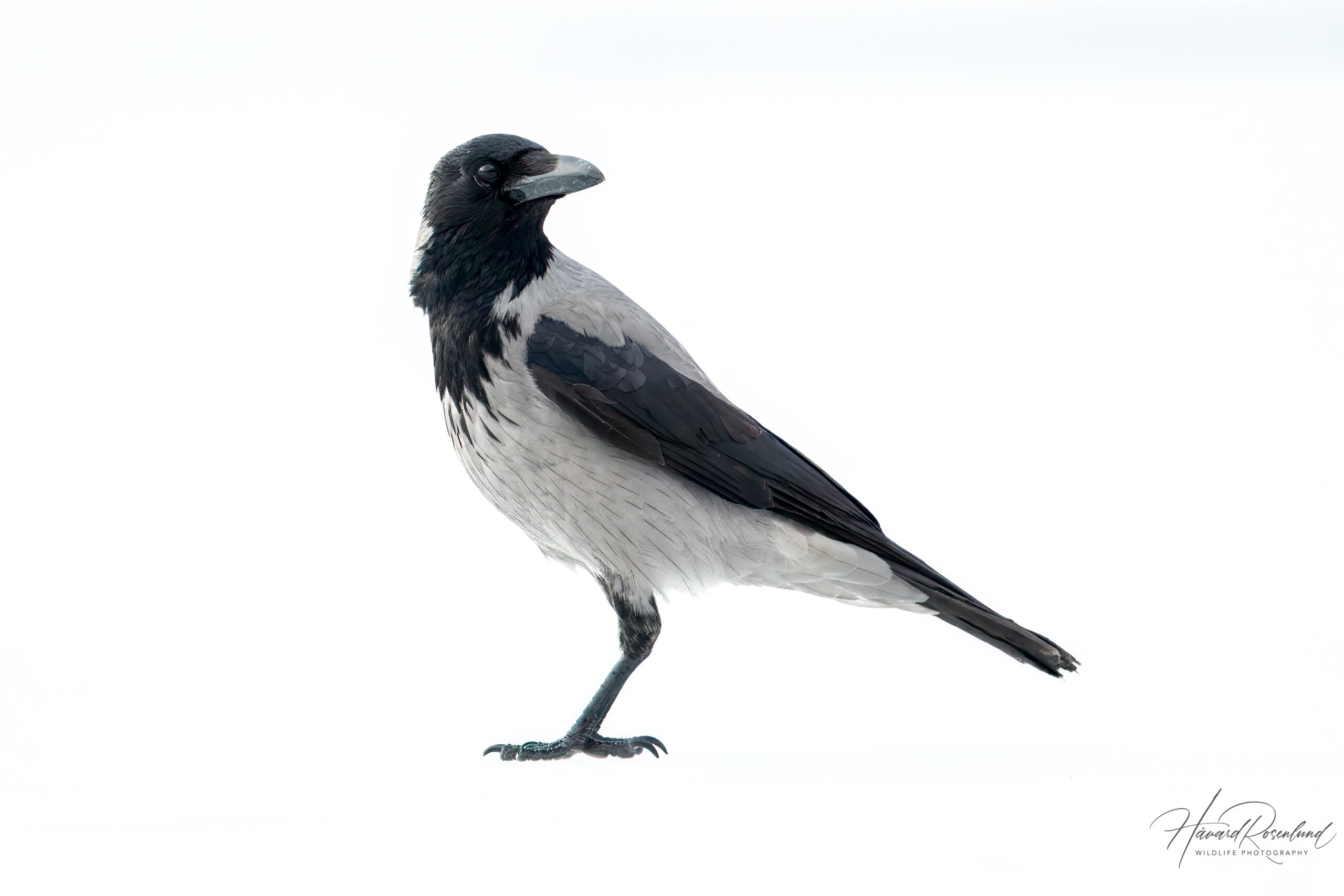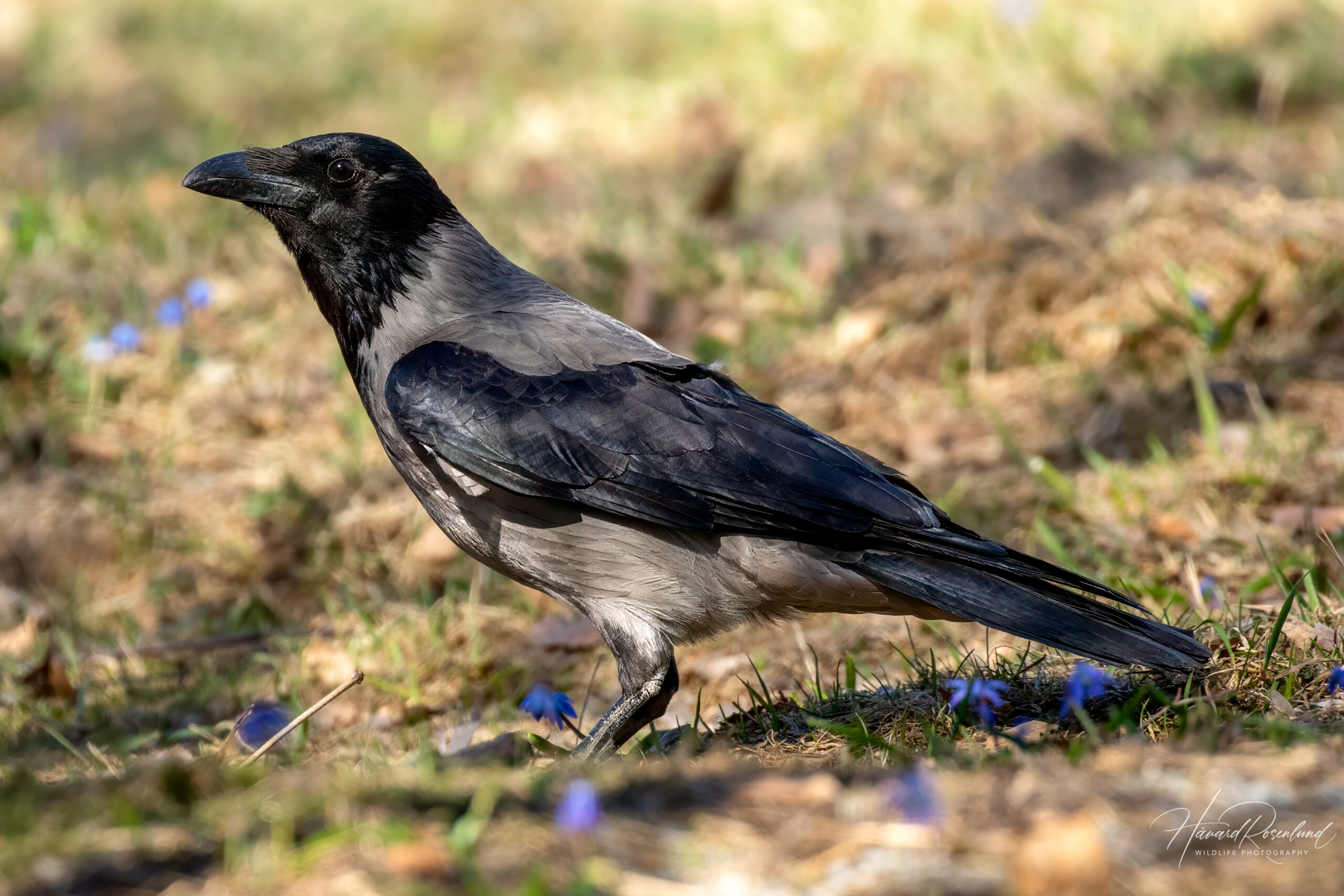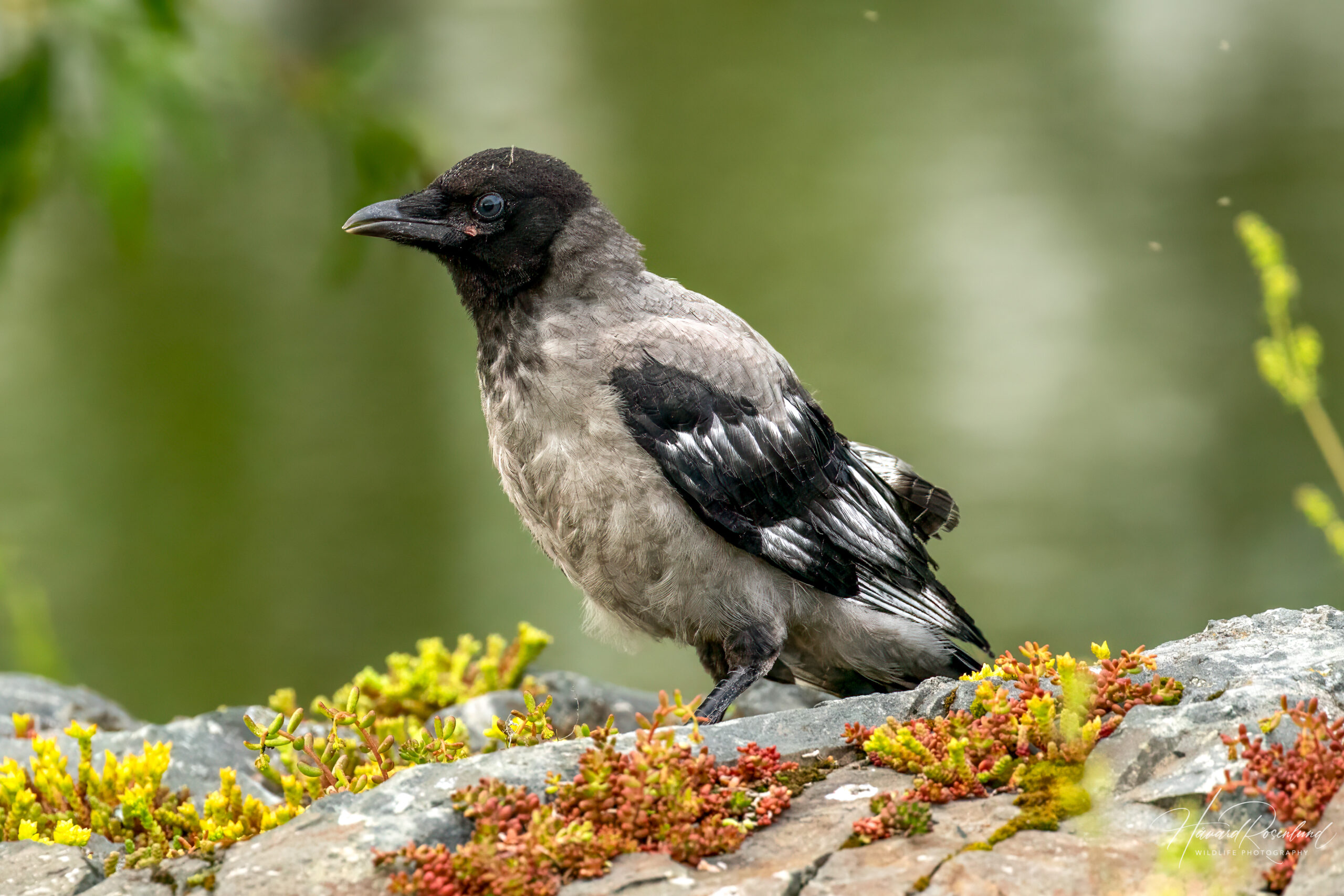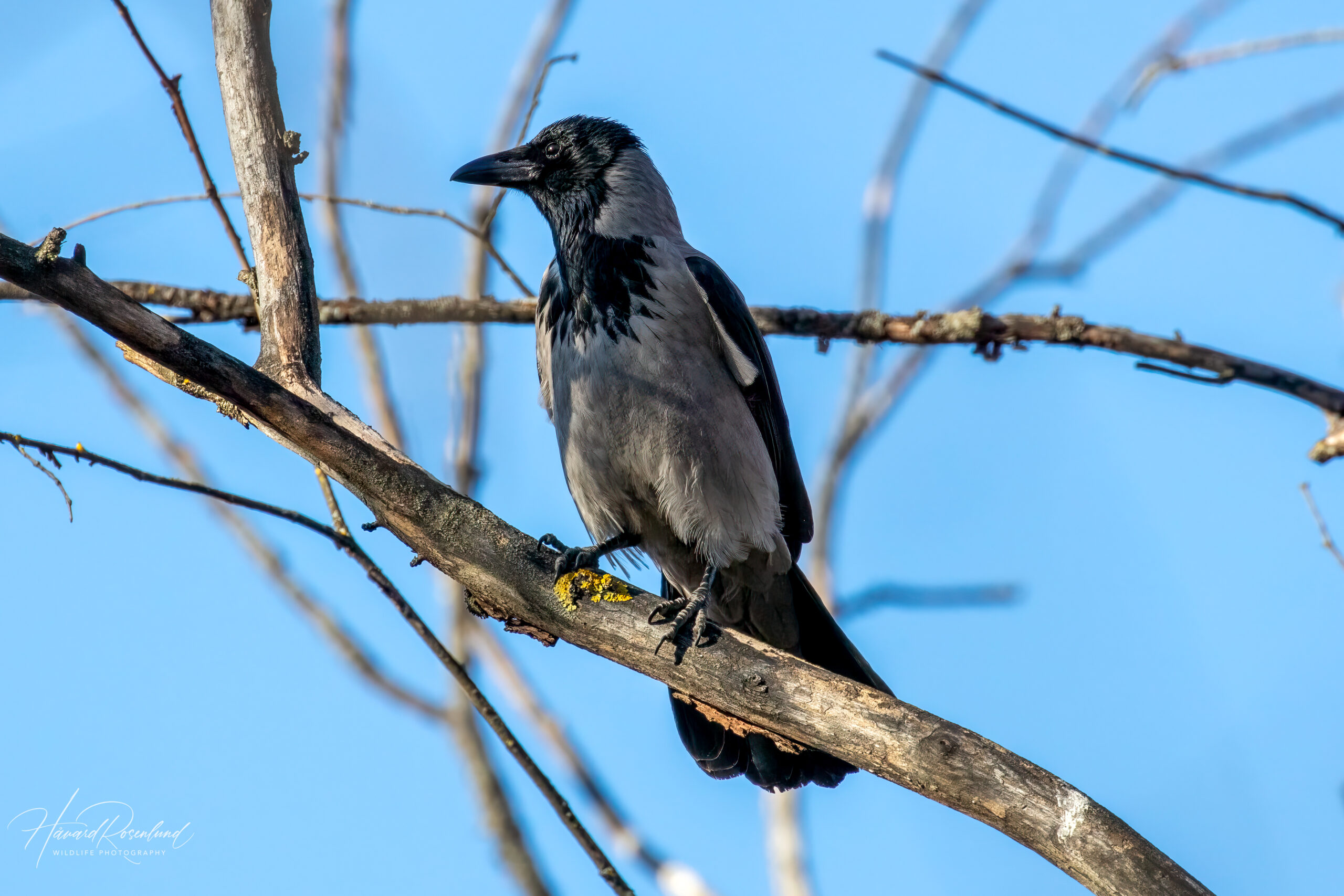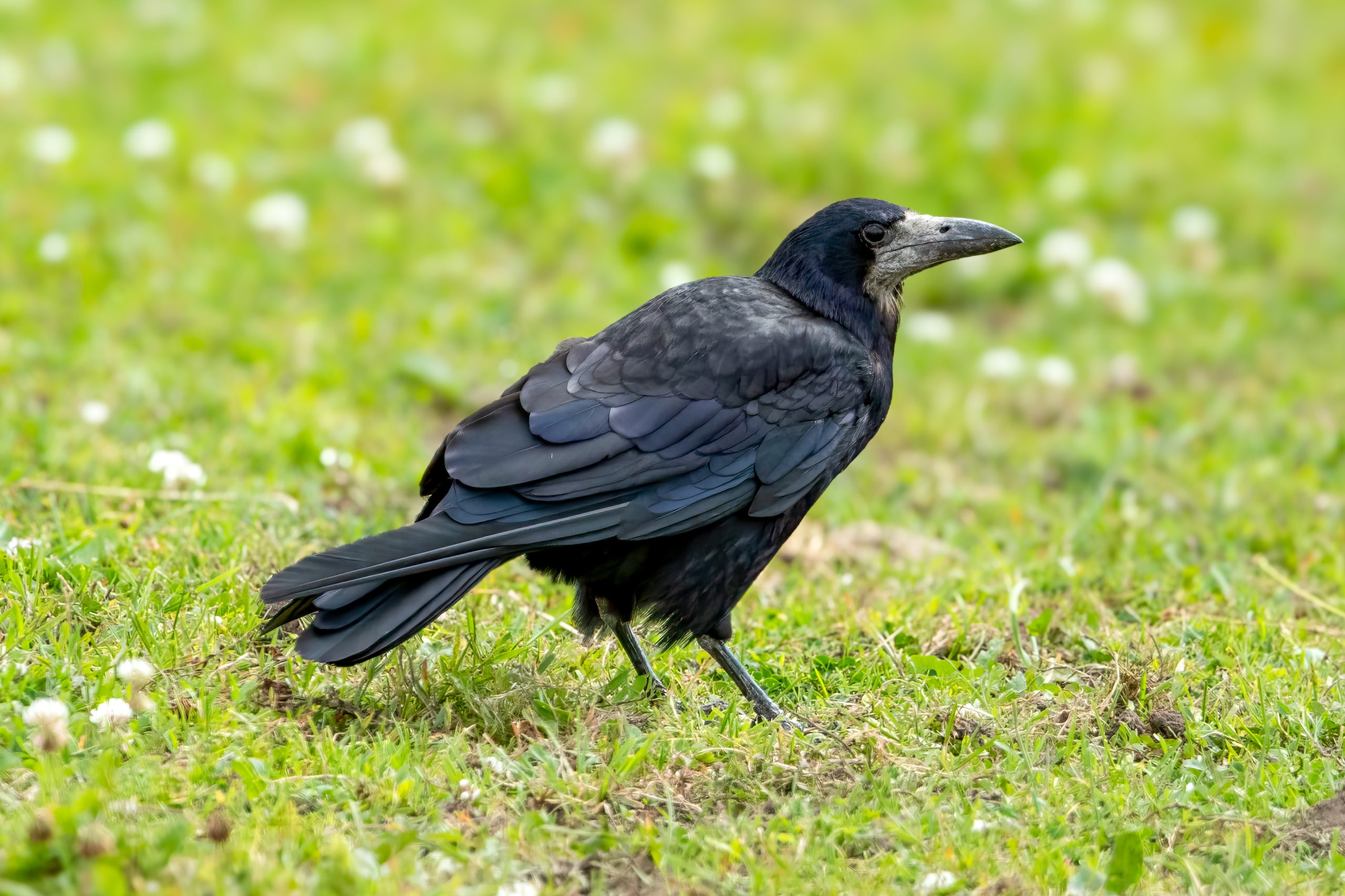Description
The hooded crow (Corvus cornix) is a species of crow with a range extending from Europe to Central Asia. It measures approximately 48-52 cm (18.9-20.5 in) in length, with a wingspan of around 98 cm (38.6 in). The hooded crow’s body is primarily grey, with a black head, throat, wings, tail, and bill. This coloration differs from the all-black appearance of the similar sized carrion crow (Corvus corone). These two species were previously considered to be subspecies of the same species. However, genetic analyses have led to the hooded and carrion crows being recognized as separate species.
The two species do meet and hybridize to some extent where ranges overlap, but hybrids are not as well adapted to survive as non-hybrids. In Europe, the hooded crow is found in Northern, Central, and Eastern Europe, as well as Scotland and Ireland, whereas the carrion crow is found in Western Europe, as well as England and Wales in Great Britain. The carrion crow is also found further East in Asia, from where the range of the hooded crow ends in Central Asia. Thus, the hooded crow is found between two separate populations of carrion crow.
Diet & habitat
The hooded crow is a versatile bird, inhabiting a variety of environments from urban areas to woodlands, coastal regions, and farmland. Its diet is omnivorous and includes insects, small mammals, carrion, grains, and also human waste, demonstrating its adaptability in foraging. It employs a range of techniques to access food, such as dropping shellfish from a height to break them open.
Intelligence & social behavior
Hooded crows are among the most intelligent of bird species, exhibiting remarkable problem-solving skills and adaptability. They are known for their ability to use tools, a rare trait among birds, to obtain food and solve complex puzzles. Socially, these crows are highly interactive and cooperative, engaging in communal roosting and defending territories collectively. They can communicate effectively within their group through a sophisticated system of calls and signals, and they have been observed working together to overcome obstacles or fend off predators. Hooded crows can mimic sounds from their environment, including human-made noises.
Migration
The hooded crow exhibits partial migratory behavior. Birds from the colder regions in the north and east migrate southward during winter, whereas populations in milder climates tend to be sedentary.
Nesting
Breeding season typically begins in March or April, but it can vary with geographical location. Nests are often constructed in tall trees but can also be found on cliffs and buildings. The female typically lays 4-5 eggs, which are incubated for about 18 days. Both parents feed the fledglings, which leave the nest after about 4-5 weeks. An interesting aspect of their reproductive behavior is the communal defense of nesting territories, where neighboring crows will come together to protect each other’s nests from predators.
Status
The hooded crow is common and widespread, and it is listed as least concern on the IUCN Red List (where it is assessed alongside the carrion crow). Despite facing threats from habitat loss and pollution in some areas, the species benefits from its adaptability and wide range. Its population is stable or increasing in many regions, thanks in part to its generalist diet and ability to coexist in urban environments.




